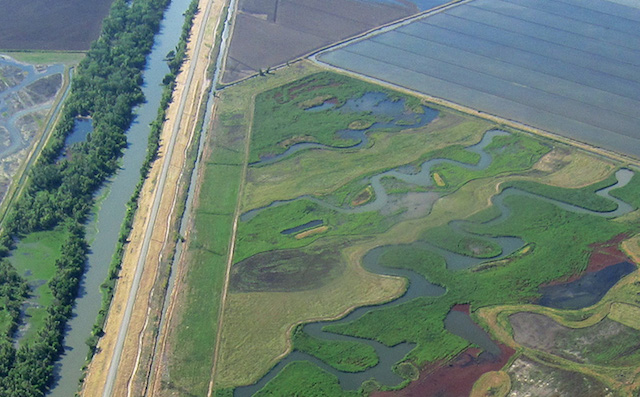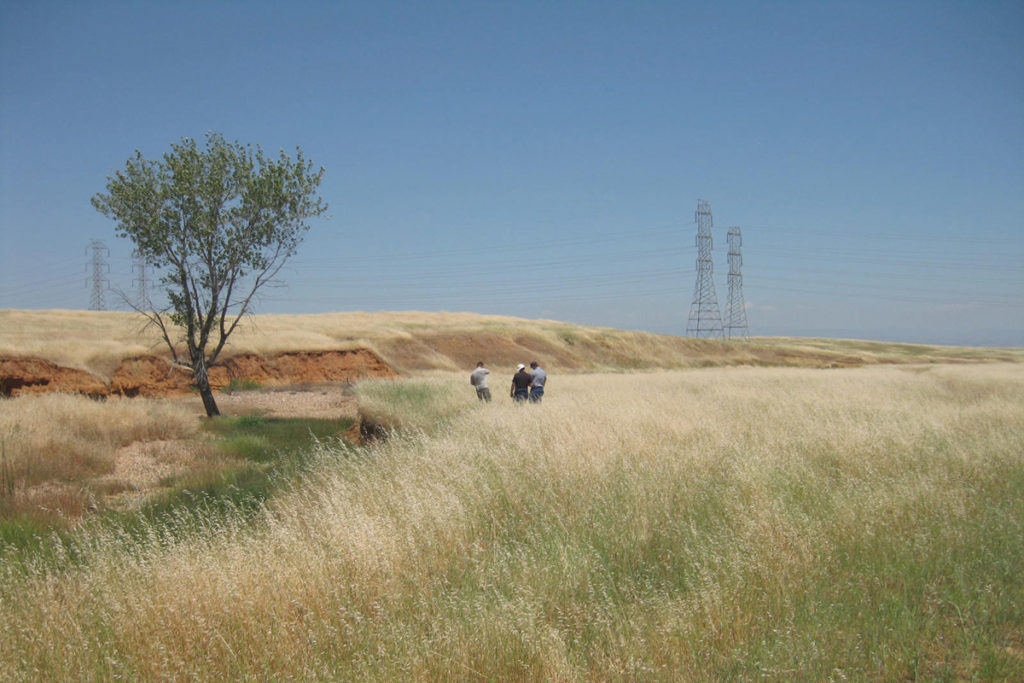For more than 40 years, there has been confusion and frustration regarding the precise definition of the “waters of the United States” (also known as “WOTUS”) under the Clean Water Act. Since 2014, the drama has increased as the Environmental Protection Agency and U.S. Army Corps of Engineers issued a regulation attempting to define the term. So where does the law stand now on the meaning of WOTUS, and why do so many people care so much?
A fluid definition
Passed in 1972, the Clean Water Act gave the EPA and Corps of Engineers federal jurisdiction over “waters of the United States.” Essentially, anyone who wishes to conduct certain activities in a water of the United States—such as point-source discharge of pollutants or discharging dredge and fill materials—must obtain a federal permit to do so. The Clean Water Act, however, offered no definition of the term “WOTUS.” Not surprisingly, this proved problematic.
Since Congress passed the act, it has left it up to the courts to address the intricacies of this issue. Several times, cases involving whether a wetland, isolated pond, or other waters fell within the federal jurisdiction have made their way to the U.S. Supreme Court. This culminated in the 2006 case Rapanos v. U.S. Army Corps of Engineers.
In Rapanos, the court had to determine whether wetlands lying near ditches or drains that eventually emptied into a traditional navigable waterway were considered to be waters of the United States. In a complicated turn of events, the court split 4-1-4.
Regardless of one’s opinion on the proper scope of the WOTUS definition, all can likely agree that regulatory certainty is needed in this area.
Four justices, led by Justice Scalia, held that the lower court applied the incorrect standard to determine if the wetlands were jurisdictional. In Scalia’s opinion, which was joined by Justices Roberts, Thomas, and Alito, he articulated the correct standard as requiring a WOTUS to be a “relatively permanent, standing, or continuously flowing body of water” commonly recognized as “streams, oceans, rivers and lakes” that are connected to traditional bodies of water. Justices Stevens, Ginsburg, Souter, and Breyer held the opposite, finding that the proper analysis was to defer to the Corps of Engineers if it reasonably concluded that a wetland may affect water quality of adjacent lakes and streams.
Breaking the 4-4 tie was Justice Kennedy. He issued a concurring opinion where he agreed with the outcome reached by the Scalia opinion—that the property at issue was not a WOTUS—but he did not agree with the legal reasoning used to reach that conclusion. Instead, his opinion set forth an analytical framework that asked whether the land at issue possessed a “significant nexus” to waters that are navigable. The fractured Rapanos opinion offered little clarity, and disputes continued.
Clear as mud
In 2014, the EPA and Corps of Engineers issued a proposed rule that would “clarify” the definition of WOTUS under the Clean Water Act. The 88-page document focused largely on Justice Kennedy’s “significant nexus” test as set forth in Rapanos. Many industry groups and landowners were concerned about the scope and breadth of the EPA’s proposed definition, and more than 698,000 comments were made during the public comment period of the rulemaking process.
The following year, the EPA and Corps of Engineers published a regulation defining WOTUS, still focused on the “significant nexus” approach. Almost immediately, lawsuits began pouring in across the United States, claiming that the EPA’s definition was overly broad and exceeded the scope of authority granted to the agencies pursuant to the Clean Water Act. In October 2015, the U.S. Court of Appeals for the Sixth Circuit issued a nationwide stay on the rule pending litigation.
In February 2017, President Trump issued an executive order that required the EPA and Corps of Engineers to “rescind or revise” the 2015 rule. The order said that the agencies should “consider interpreting” the term consistent with Justice Scalia’s opinion in Rapanos. In June, the EPA announced a “two-step” rulemaking process that will first rescind the 2015 rule, which is currently on the books but not in effect due to the Sixth Circuit’s stay, and then will promulgate a new rule in its place.
Although many groups opposing the 2015 rule touted victory upon the issuance of the executive order, this issue is far from over, and it will likely be some time before a new WOTUS definition is formalized.
First, rescinding a rule already promulgated is not as simple as it may sound. It will require significant time to allow for proper notice and comment procedures to rescind the 2015 rule and get a new rule published in its place. To date, the EPA has set forth an initial proposed rule, which essentially seeks to codify the interpretation as it was prior to the 2015 EPA rule. (Due to the Sixth Circuit stay, the pre-2015 approach is the one currently followed by courts across the United States.) Specifically, the proposed rule would codify an approach consistent with the Rapanos Supreme Court decision, applicable case law, and other longstanding agency practices. The rule’s comment period closed at the end of September, and the EPA plans to issue a final rule upon completion of its review.
Second, once the new rule is finalized, the EPA will conduct a “substantive re-evaluation” of the WOTUS definition. This will essentially go one step further by setting forth a new definition of WOTUS. Again, the EPA will propose a rule, and the required comment period will commence before a final rule can be published in the Federal Register.
Third, remember, there are still numerous lawsuits pending across the country challenging the scope of the 2015 EPA rule, some of which have been filed in federal district court (trial level) and others in federal appellate courts. There is a dispute over which is the proper venue to hear this type of dispute. The Supreme Court waded into the issue in October, hearing oral arguments on whether the federal district court or federal appellate court has proper jurisdiction over a challenge to the WOTUS rule.
Fourth, with the 2015 rule being stayed, the current approach to WOTUS is the same as the original rule that resulted in the complicated Rapanos decision. This continues to cause confusion and uncertainty for landowners, developers, and agricultural interests, to name a few, when trying to determine whether certain property qualifies as a WOTUS.
Searching for certainty
The real-life impact of the WOTUS rule is illustrated by the California case of Duarte Nursery v. U.S. Army Corps of Engineers. In that case, a farmer purchased 450 acres of land in Northern California. The land was farmed until the 1980s, when it was converted into pastureland for cattle. Upon purchasing the property, John Duarte began plowing and sowing wheat. At that point the Corps of Engineers stepped in, claiming that the “vernal swales” on the land were hydrologically connected to and had a significant nexus to the Sacramento River, approximately 8 miles away. Duarte, therefore, would need a federal permit under the Clean Water Act to plow his field. According to a recent Supreme Court opinion, it generally takes 313 days and costs $28,915 to obtain such a permit. Duarte disagreed that a permit was required, and he sued.
The trial court judge sided with the Corps of Engineers, finding that the vernal swales were, in fact, waters of the United States, and that Duarte was required to obtain a federal permit to plow his field. The judge rejected an argument that the “ongoing farming operations” exception to the Clean Water Act would exempt the farmer from needing a permit, reasoning that although the land had been in agriculture for decades prior to 1980, it had not been plowed and farmed since then, so there was no “ongoing” operation. A few months later, Duarte “reluctantly” settled the case, stating that he could not face the possibility of $45 million in potential fines. He will not admit liability but will pay the government $330,000 in civil penalties and purchase $770,000 in mitigation credits. Additionally, he has agreed to limit use for the next 10 years on the 44 acres of his property that the Corps of Engineers considers to be a WOTUS, allowing only “moderate non-irrigated cattle grazing and weed, pest, or invasive species control.”
Regardless of one’s opinion on the proper scope of the WOTUS definition, all can likely agree that regulatory certainty is needed in this area. A rule that will allow a landowner to look at his or her property and adequately determine whether a WOTUS is present would be a welcome change to 40-plus years of confusion and uncertainty.





